Best speakers 2025: reviewed and recommended by our experts
Great hi-fi speakers for every budget
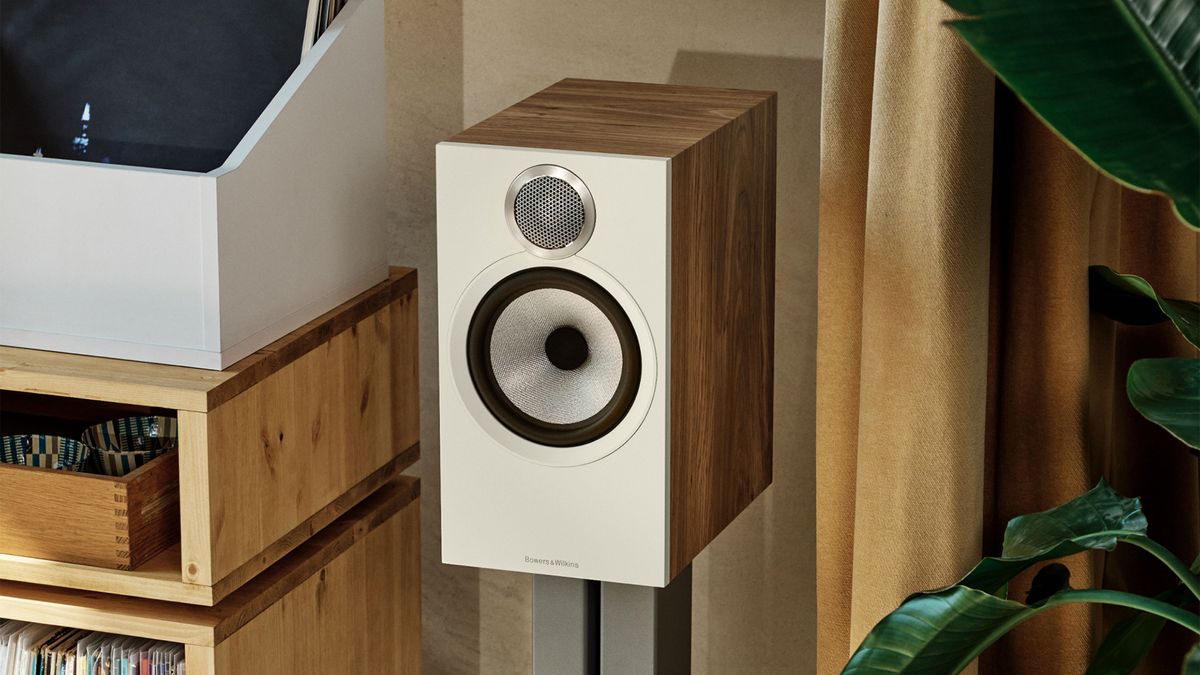
If you're looking for a new pair of stereo speakers, then you're in the right place. Whether you have a strict budget or thousands to spare, ample space for large boxes or very little space – we have the top speaker picks to suit your budget and requirements.
What Hi-Fi? has been reviewing all kinds of stereo speakers for close to 50 years, so we know exactly what a great pair of speakers should deliver at every price point. Clarity and detail, engaging dynamics and rhythms, even tonal balance and accurate soundstaging are the sonic traits our experienced review team listens out for with every speaker, along with ensuring the build quality is of a good standard for the asking price.
This curated list of the best passive speakers we've tested and recommend should have something for everyone's needs and musical tastes, and we have options for small bookshelf and large floorstanding models below, so you can pick what fits your space the best. Plenty of the models are also current What Hi-Fi? Award winners, so you know you'll be getting the best recommendation and performance at each price range.
You'll even find some of the best prices from around the web for each model so you can compare with rival speakers, but be sure to check whether the figure quoted below is for just one speaker or a pair before buying. You can read more about how we test speakers, get the best tips on choosing the right speaker for your needs, or scroll down to see our top speaker recommendations.
The quick list
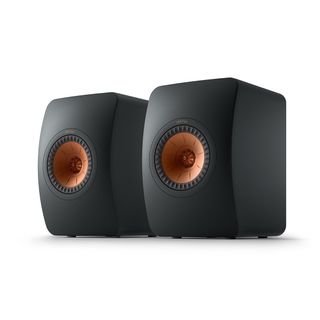
With innovative tech, exceptional performance, and unbeatable build quality, we'd recommend these to anybody.
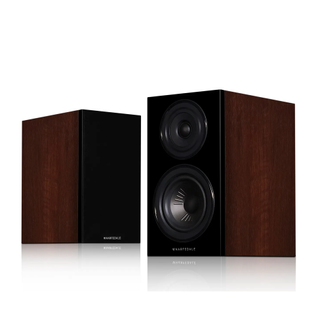
These budget-friendly Diamonds are wonderfully composed, refined and controlled for their affordable price.
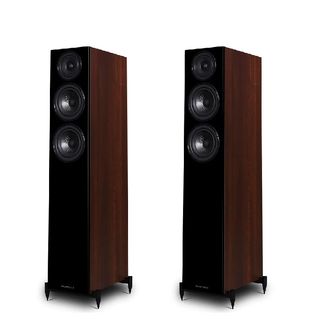
It’s tough to make a truly talented and affordable floorstander, but Wharfedale has cracked it. Ignore these terrific towers at your peril.
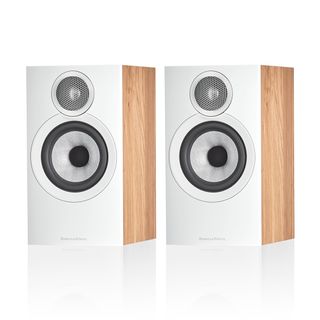
Open, refined, dynamically expressive and heaps of fun, new B&W's 607 S3 are the standmounters to beat at this price.
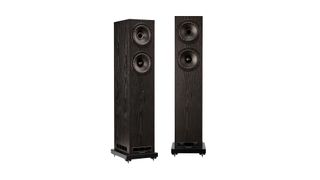
A talented all-rounder that delivers a cohesive, dynamic and entertaining performance that blows away the established rivals at this price.
Read more below
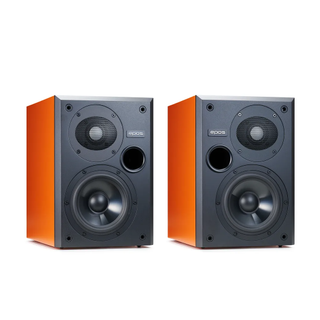
Petite premium speakers that are superb performers and are even optimised to be placed inside a bookshelf.
Load the next product… ↓
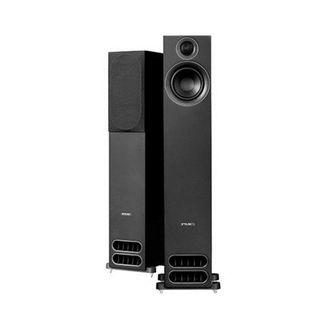
One of the best sound-per-pound models, these plain-looking speakers deliver astonishingly refined and gorgeous sound.

I'm the Hi-Fi and Audio Editor of What Hi-Fi? and have been reviewing hi-fi speakers for over a decade. I have tested and listened to every pair of speakers listed below, and can genuinely recommend each model for their excellent build quality, superb sound and value for money at each price level. Regardless of your music preferences, I'm confident you'll be able to find a speaker that suits your needs and sonic tastes. Just remember to take care when matching with your source and amplifier and, if you're able to, always demo before buying.
Recent updates
14th March 2025: We've added the five-star Fyne F501E as our new favourite mid-price floorstanders, while the Q Acoustics 5050/5040 remains a terrific alternative and is in the 'also consider' section. The 'coming soon' section has also been updated with new speakers.
Best speakers overall






Specifications
Reasons to buy
Reasons to avoid
The original LS50 speakers were absolutely terrific in their own right, but KEF eventually decided that they could do better. Eight years on from the original LS50, the LS50 Meta were born, and they've proven to be a truly worthy upgrade. And with multiple Award wins to their name, the LS50 Meta continue to impress us with their incredibly subtle, transparent and entertaining performance.
KEF reworked the LS50’s Uni-Q driver array, where the tweeter sits in the throat of the mid/bass unit, taking in all the refinements that KEF has developed over the past eight years and adding something new in the form of Metamaterial Absorption Technology (MAT). MAT is KEF’s way of coping with the sound that comes off the back of the tweeter dome via a circular maze of tubes on the back which absorbs sound more effectively and results in cleaner, less distorted highs.
And this works brilliantly – treble performance is more refined and clearer than before, and it's been such a success that the MAT technology has been implemented in many other KEF speaker ranges since.
While the basic sonic character is instantly familiar, the LS50 Meta have gained serious new levels of clarity and finesse that the original speakers couldn't manage. The speakers sound clean and tight, but they still offer muscle and dynamics to give your music plenty of oomph, character and interest. We said in our review: "Large-scale dynamics are handled well and there’s a good amount of muscle for a speaker of this size. These are refined and composed performers that rarely sound stressed unless volume levels are high."
As far as we're concerned, the LS50 Meta are some of the finest sound-per-pound (or dollar) speakers around and is compatible with a wide variety of partnering products. They continue to set the standard at this level to which others should aspire.
Read our full KEF LS50 Meta review
Best budget bookshelf speakers





Specifications
Reasons to buy
Reasons to avoid
Wharfedale's Diamond range of speakers has always had one mission: to offer top class sound at an affordable price. Over 40 years on, it continues to succeed in its mission. The current Diamond 12.1 standmount/bookshelf speakers have updated drive units and better cabinet construction, but these speakers remain as recommendable as when we first reviewed them in 2020.
The Diamond 12.1 have a bold, full-bodied presentation with plenty of detail. The speakers sound composed and refined, qualities that are rather unusual at this budget price point. They deliver more authority and scale than their modest price and size suggest, too, and while we don't expect bone-shaking bass from such small boxes, low-end notes sound full and dig deep enough to satisfy at this level.
Overall these speakers have a smooth tonal balance and a forgiving nature, but they have just enough bite and convincingly communicate the shifts in dynamics to keep you drawn to the music. There's ample rhythmic punch and subtleties in detail are admirable revealed at this level, too.
At this price, the Diamonds have faced serious competition from some excellent affordable speakers. We're still big fans of the expressive and agile Dali Spektor 2, while the multi-Award-winning Elac Debut B5.2 offer just a bit more rhythmic prowess and transparency. This Elac model has been discontinued, however, leaving the door open for the Wharfedale Diamond 12.1 to emerge as current budget favourites with their easy-going nature that will partner well with most components. You won't get a more crowd-pleasing performance at this level.
Read the full Wharfedale Diamond 12.1 review
Best budget floorstanding speakers





Specifications
Reasons to buy
Reasons to avoid
Wharfedale's Diamond range now features a truly outstanding (and affordable) floorstander. Indeed, we're so impressed by the Wharfedale Diamond 12.3's musical performance that it's a multiple and current What Hi-Fi? Award winner.
At 98cm tall, the Diamond 12.3 aren't a particularly imposing pair of floorstanders, so they'll fit into most spaces. Sonically, they're smooth, even-handed and wonderfully refined for the money. Feed them a poor signal and they’ll round off rough edges and downplay unwanted aggression without sounding like they’re smothering the life out of the music.
In our original review, we said: "Play them louder and these speakers don’t complain. They deliver Hans Zimmer’s raucous The Battle from the Gladiator OST with verve, tracking the brutal dynamics well. There’s punch and power when required, but also a level of subtlety that’s rare to find in a floorstander at this price."
The build quality is top-notch for the relatively modest price tag. The cabinets are crafted with a traditional straight-edge design and have a tidy feet arrangement for stability. These speakers are available in four finishes – black, walnut, white and a classy light oak – which is plenty of choice for most interiors.
If you're looking for reasonably-priced hi-fi floorstanders, the talented Wharfdale 12.3 are a superb buy.
Read the full Wharfedale Diamond 12.3 review
Best mid-price standmount speakers







Specifications
Reasons to buy
Reasons to avoid
B&W's entry-level 607 S3 speakers are the British brand enjoying a real hot streak. The smallest and most affordable stereo speaker that B&W makes, the 607 S3 have replaced the previous Award-winning 607 S2 Anniversary Edition speakers, amping up the levels of performance in the process.
The 607 S3 standmounters have been updated throughout, boasting a new 25mm titanium decoupled double-dome tweeter, a new elongated tube loading system, a revised motor assembly for the 13cm Continuum mid/bass driver and higher-quality crossover components. The two drivers overlap to improve integration, while B&W claims the use of titanium should result in more refined and detailed high frequencies. All of that has led to some serious gains in terms of sonic performance.
You will need to be careful about partnering, though, as that rather forward, excitable treble does need some balancing out. Get it right and you'll be handsomely rewarded with a detailed, cohesive, agile and energetic sound. The overall presentation is more open-sounding than the previous iteration, while the higher sonic reaches are sweet and refined as each note lands with precision are genuine verve. Basslines are taut and firm, and while they don’t go as bone-shatteringly deep as bigger speakers (or even as big as the bigger, step-up 606 S3), they certainly land with impact.
Best of all, the 607 S3 will appeal to anyone who likes their music to take them on something of a metaphorical journey. The British-made towers are immensely fun to listen to, offering clarity and refinement running parallel with a zippy, deeply musical core. So many manufacturers prioritise analytical detail to the detriment of dynamics and musical interest, but B&W S3 haven't fallen into that trap: they're a delight from top to bottom.
Read our full Bowers & Wilkins 607 S3 review
Best mid-price floorstanding speakers







Specifications
Reasons to buy
Reasons to avoid
Fyne Audio's new entry-level floorstanders are aggressively priced. The 501E incorporate the brand's proprietary Isoflare driver technology that we've only seen in more premium models so far, and these floorstanders deliver a performance that outstrips their more established rivals at this midrange price.
Like PMC, the brand has sacrificed visual cosmetics to keep pricing down to this sub-£1000/$1300 level, which means you can only get the 501E floorstanders in a single (and somewhat plain) black ash finish. The build quality is solid, though, and the speakers are peppered with clever technology to ensure they are relatively unfussy with placement and partnering. The Isoflare arrangement – a concentric design where the tweeter sits in the throat of the mid/bass driver – delivers an integrated sound with a very even and wide dispersion. The low frequencies are spread evenly thanks to a downward port design, vents and Basstrax technology, which disperses bass evenly across a 360-degree spread – allowing these towers to be less fussy about room placement.
The 501E are tremendously fun to listen to, with a fluid and expressive way with all music genres. Rhythm and dynamic shifts are handled with control and subtlety, with instruments and voices sounding natural. The overall sound is crisp and clear, with a nicely balanced tonality – the top end is refined and doesn't get harsh or bright with challenging material, while the bass remains taut and tuneful while packing ample punch. We said in our review that the F501 deliver a "forthright performance with vocals that captures nuances and subtle shifts in intensity superbly. The rival Q Acoustics 5050 sound a touch disinterested and mechanical in contrast."
These are wonderfully insightful and capable floorstanders, balancing sophistication with muscularity, being able to communicate intimate recordings as well as full-blown orchestral crescendos with conviction. For their asking price, we couldn't ask for better. We are entertained, and we think you will be too.
Read the full Fyne Audio F501E review
Best premium standmount speakers










Specifications
Reasons to buy
Reasons to avoid
While we (and most manufacturers) would advise you to place standmounter or bookshelf speakers on dedicated stands, Epos has made things a little more flexible. Recognising that it's not always viable for people to accommodate stands in their space, Epos has optimised its ES-7N small speakers so they sound their best even when placed inside a bookshelf.
Flip a switch at the back of these petite speakers and the speakers will adjust their performance accordingly when placed up against a wall or corner to remain evenly balanced. It's impressive just how close to the free-standing (away from wall, on stands) performance these speakers get when placed inside our IKEA Kallax bookshelf, and while there is a slight drop in clarity and stereo imaging, it remains a fantastic presentation overall.
In fact, even though these are small boxes that won't compete with larger designs – such as KEF's R3 Meta, which offer deeper bass, bigger and more dynamic sound – what these Epos speakers do so well with music gets us smiling with joy and our feet tapping. They're incredibly talented.
As we said in our review: "The ES-7N are bold and confident performers that resolve high levels of detail and organise it in a cohesive and musical way. Play Kendrick Lamar’s Not Like Us and the Epos kick like a mule. They sound taut and punchy with music such as this, delivering the song’s jumpy rhythm track in a wonderfully surefooted manner. There is plenty of drive here and the speakers are great at conveying the music’s varying momentum."
Voices are delivered with impassioned nuance and clarity, and bass notes are – for such small cabinets – taut, solid and grippy. We love the similarly-priced Neat Petite Classic's fun, peppy presentation, but the Epos are even more precise and controlled when it comes to rhythmic agility. They are just as considerate with more classical or intimate recordings, and they pair well with a variety of amplifier partners, from the budget Rotel A8 to the premium Naim Nait XS3.
The Epos ES-7N are charming performers. They are small, hugely capable and surprisingly unfussy in use. That they recognise not everyone will be able to position their speakers perfectly and sound just as good when placed inside bookshelves is a rare talent that should be celebrated. If your budget can stretch this high and you have a small space to work with, these are highly recommended.
Read the full Epos ES-7N review
Best premium floorstanding speakers





Specifications
Reasons to buy
Reasons to avoid
PMC has something of a reputation for high-end hi-fi, and while the superb Prodigy 5 have wound up as our best premium floorstanders on this list, they're actually miraculously good value.
To achieve this, the Prodigy 5, much like their five-star Prodigy 1 standmount siblings, have been designed to eke out as much sound-per-pound punch as possible, letting considerations over design and aesthetic flourishes fall away in the pursuit of the best audio you can get for the price.
Boy has the effort paid off, though. PMC has hit the sweetest of sweet spots with the Prodigy 5, balancing subtle details and musical flourishes with a perceptibly heightened sense of presence, poise and confidence. In terms of sonic performance, we didn't hear many better speakers this year, and it was the Prodigy 5's musical chops that really earned them that 2023 What Hi-Fi? Award. Looks may be important to some, but PMC's dedication to all things sonic has paid serious dividends in our books.
The Prodigy 5 seem to be adept at giving the best of all worlds without a hint of sonic sacrifice. While comparatively priced rivals substitute space for precision or dynamics for subtlety, PMC’s unassuming towers are truly comprehensive performers. There's so much scale and breadth to them, yet they never seem to sacrifice the intimacy or nuance of a piece, either. It's a remarkable trick, and one that had us wanting to test more and more tracks to see what the Prodigy 5 could do with them.
All in all, a marvellous success story. Worthy winners, indeed, and an excellent pair of slimline floorstanders.
Read our full PMC Prodigy 5 review
Also consider
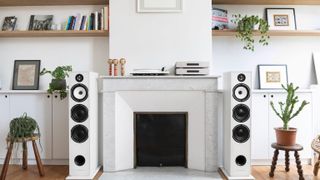
There are plenty of excellent speakers that we couldn't fit into the main list above, so here are some more alternative options, both new and old, that we recommend to anyone looking for a new pair of speakers.
Dali Spektor 2: These long-running favourites are an affordable alternative to the Award-winning Wharfedale speakers. We like the way these compact speakers have a fluid, natural way with midrange and dynamics, making them an entertaining listen on a budget.
KEF R3 Meta: There's no doubt that the R3 Meta remain some of the best premium standmounters on the market. Wonderfully transparent, refined and entertaining performers that have been built to the highest standards, they deserve a place on your shortlist if you want a large soundstage and ample punch.
Neat Petite Classic: If you're after high-quality sound but don't have a large space to accommodate larger speakers, these petite bookshelf speakers will win you over with their immense sense of fun, excellent rhythmic precision and agility. Just don't expect a huge amount of bass extensive or scale.
Q Acoustics 5050: These flagship and Award-winning 5050 floorstanders are worth serious consideration, especially if you have ample space. They have a more balanced and mature presentation over the five-star Q Acoustics 5040, with the extra authority and detail more than justifying the step-up in price.
Triangle Borea BR08: Thrilling dynamics, lots of punch and rhythmic drive: these Triangle floorstanders are expansive and spacious, and a huge amount of fun. They need careful partnering and a large room to flaunt their talents.
Epos ES14N: If analysis, organisation and control are high on your list of priorities from a speaker, these large standmounters will impress. An open, natural way with voices warm us to their considerable talents, and they also offer exceptional clarity, dynamics and detail. Some might prefer more energy and rhythmic drive, but these premium speakers reward long-term listening.
Stereo speakers coming soon
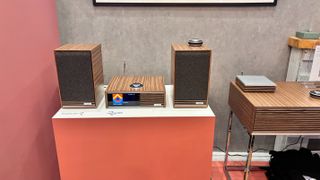
- Ruark Audio Sabre-R: Better known these days for its stylish DAB and smart internet radios, Ruark has gone back to its roots with a set of bookshelf speakers that are yours for $899 per pair. We are expecting to get a review sample in the coming months.
- Elac Debut 3.0 DB53-BK: We've been waiting to get our hands – and ears – on Elac's new budget Debut 3.0 series, as it replaces some of our favourite Award-winning budget speakers. We have the DB53 bookshelf model ($350 per pair) in our test rooms and are currently testing them.
- Quad ESL-2912X: It's been 12 years since the last electrostatic speaker from Quad, so anticipation is high for this next-gen model launching this summer. We are big fans of the current ESL-2812 speaker, but the upcoming 2912X is positioned as the new flagship with upgrades inside and out.
- Wharfedale Super Linton: With extensive upgrades to the cabinet, crossover and drive units, the Super Lintons are a step-up version of the excellent Wharfedale Lintons from 2019, which we called "undeniably superb" in our five-star review. Price is $2499 / £1999 / AU$5199 with stands.
How to choose the best speakers for you
First things first, decide on a budget. Your components should be evenly matched, both tonally and in terms of price, so consider this before breaking the bank on a new pair of speakers that the rest of your kit can't do justice. If anything, an overly expensive amp or source will strain and stretch your speakers, and while some may be able to cope, others will be worse off as a result of some overly ambitious pairing kit.
You also need to make sure your speakers fit your room. Most speakers require a degree of space to sound their best, so be sure not to buy speakers that are too big for your listening area, and make sure you're the right distance away from your new purchase.
This is also a good time to consider whether you want bookshelf or floorstanding speakers. Bigger speakers mean higher volumes but, again, you need the space, and more driver units don't always mean better sound.
There's also the choice between passive and active speakers. Most speakers on this list are passive - they have no amplification inside, so require a separate amplifier to work. Active speakers with amplification (and sometimes DAC and streaming smarts) are increasingly popular and can connect straight to your source, no amp required, though they do require a connection to mains power. Check out our pick of the best active speakers if you're curious.
For a more detailed explanation of everything you should consider, check out our complete guide to choosing the right speakers.
How we test speakers
Here at What Hi-Fi? we review hundreds of products every year, including plenty of speakers of all shapes, sizes and types. So how do we come to our review verdicts? And why can you trust them?
The What Hi-Fi? team has more than 100 years of experience in reviewing, testing and writing about consumer electronics. We have state-of-the-art and acoustically treated testing facilities in London and Reading, where our team of expert reviewers perform all of our in-house testing. This gives us complete control over the testing process, ensuring consistency, reliability and clarity at all times.
We use the same process when testing all hi-fi speakers: we set them up correctly in our room (and play around with positioning and angles to find the point where they deliver the optimum sound), partner with compatible electronics (and try alternative options to give more complete advice), we give them ample time to run in and play a variety of different genres of music during testing. We ensure we spend plenty of time listening to the speakers, re-positioning or switching out amplification where needed to get the best performance out of them.
We always test speakers against similarly-priced rivals that we know and love to gauge the best performance you can get for your money, and all review verdicts are agreed upon by the team as a whole rather than a single reviewer, helping to ensure consistency and avoid individual subjectivity.
From all of our reviews, we choose the top products to feature in our Best Buys, such as this one. That's why if you take the plunge and buy one of the products recommended below, or on any of our other Best Buy pages, you can be confident you're getting a What Hi-Fi?-approved product.
You can read more about how we test and review products on What Hi-Fi? here.
F.A.Q.
Are hi-fi speakers worth it?
The short answer, as you'd expect us to say, is a resounding yes.
If you prioritise sound performance and you have the space for a pair of speakers and proper amplification and source to power and feed them, then hi-fi speakers are entirely worth it. A good passive pair with not only reward you with great sound, but they should keep that sound and performance going for a good while if you've bought from a reputable brand. There are very few, if any, speakers above which we feel fall short when it comes to durability and robustness.
If you're after a more space-saving solution, however, the market has expanded to cater for your needs. A decent pair of active speakers where the amplification (and sometimes source) is built into the speakers (such as the KEF LS50 Wireless II) can save you from having to deal with multiple extra boxes, whereas some of the finest wireless speakers (Sonos Era 100, Sonos Era 300) and all-in-one hi-fi systems (Naim Mu-so 2, Ruark Audio R410) give impressive sound with many extra features thrown in.
If you really do care about sound, though, a dedicated hi-fi setup is the way to go, and a pair of decent passive speakers is essential to that very worthwhile pursuit. Plus, you can keep building and expanding your system to tailor it to your exact tastes, needs and budgets.
Are bookshelf speakers better than floorstanders?
There's no right or wrong answer here. Our standmounts vs floorstanders article gives great insight and detail about the differences between the two types of speakers, and pros and cons of each form.
For a quick rundown, you need to consider a few things. First, the size of your room matters, as larger floorstanding speakers usually need more space to breathe on account of their larger sound field. Bookshelf or standmount speakers tend to work better in smaller rooms, but we'd still recommend that you place them on stands rather than inside or on bookshelves, to ensure you get the best performance.
Loudness levels are another factor, as smaller units aren't able to fill up big spaces so well. Floorstanders' large cabinet volumes and (potentially) larger drive units offer a bigger scale of sound, but can sometimes sacrifice a little cohesion or sonic unity in the process due to multiple drive units being used. Sometimes, not always, mind.
If you'll be using your speakers for movies as well, or you favour deep, plunging bass levels, larger units are the way to do it. If the only place to put your speakers is on your desk or you'll be sitting close to your speakers, you'll want small bookshelf units. Just bear in mind that the quantity of bass doesn't necessarily equate to better quality of bass, and how a speaker is engineered to deliver the best balance and quality of sound differs from model to model.
How much should I spend on a pair of speakers?
This is another "piece of string" question. There's no limit, and the general advice is that the more you spend, the better sound you get. Bear in mind compatibility and pairing, though, as a decent pair of speakers can be let down by cheap partnering kit. On the flipside, a more affordable pair of speakers might actually suffer if you pair them with more high-end kit, as the speakers can be forced to work harder to satisfy the demands of a high-end amplifier, say.
If you're just getting started, the price ranges above should give you a decent indication of what the more "sensible" parts of the market have to offer. We've also labelled every speaker so you have a sense of where they fall in terms of affordable, mid-range or premium, to give you a general lay of the land.
All of our speakers are tested on a "cost-per-sound" basis, so prices are heavily factored in when awarding a star rating. The question you should be asking, as we always do, is not "are these speakers expensive?", but rather "am I getting the best value for money considering the performance I'm receiving?".
Recent updates
- March 2025: Added the Fyne Audio F501E entry in the main list, and updated the "also consider" and the "coming soon" sections.
- January 2025: Updated "coming soon" section with new speaker launches and models we are reviewing next month.
- December 2024: Added a new "coming soon" section detailing the new speakers announced and that we will be reviewing in the coming months.
- November 2024: The Epos ES-7N and Wharfedale 12.1 have been added to the main list following their 2024 What Hi-Fi? Award wins.
- September 2024: Added the new five-star Dali Rubikore 2 as our premium standmount option, with the KEF R3 Meta moved to the Also Consider section.
- July 2024: Added Monitor Audio Studio 89 and Q Acoustics 5050 to the Also Consider list after their five-star reviews.
- March 2024: Added an Also Consider section with more speaker recommendations to offer buyers greater choice.
- February 2024: Updated our 'how we test' process and added FAQ section to help buyers in their decision to buy hi-fi speakers.
- November 2023: What Hi-Fi? Award-winning products labeled following the announcements of the 2023 What Hi-Fi? Awards Best Buys and Product of the Year winners.
Today's best deals
Get the What Hi-Fi? Newsletter
The latest hi-fi, home cinema and tech news, reviews, buying advice and deals, direct to your inbox.

Kashfia is the Hi-Fi and Audio Editor of What Hi-Fi? and first joined the brand 13 years ago. During her time in the consumer tech industry, she has reviewed hundreds of products (including speakers, amplifiers, turntables and headphones), been to countless trade shows across the world and fallen in love with hi-fi kit much bigger than her. In her spare time, Kash can be found tending to an ever-growing houseplant collection and shooing her cat Jolene away from spinning records.
- Harry McKerrellSenior staff writer